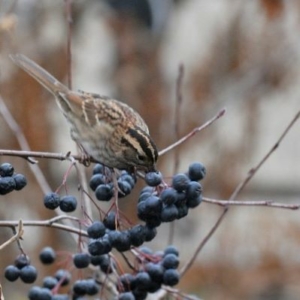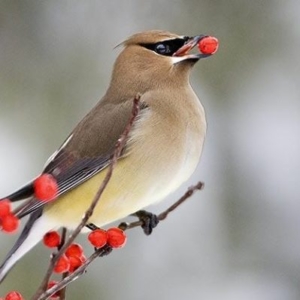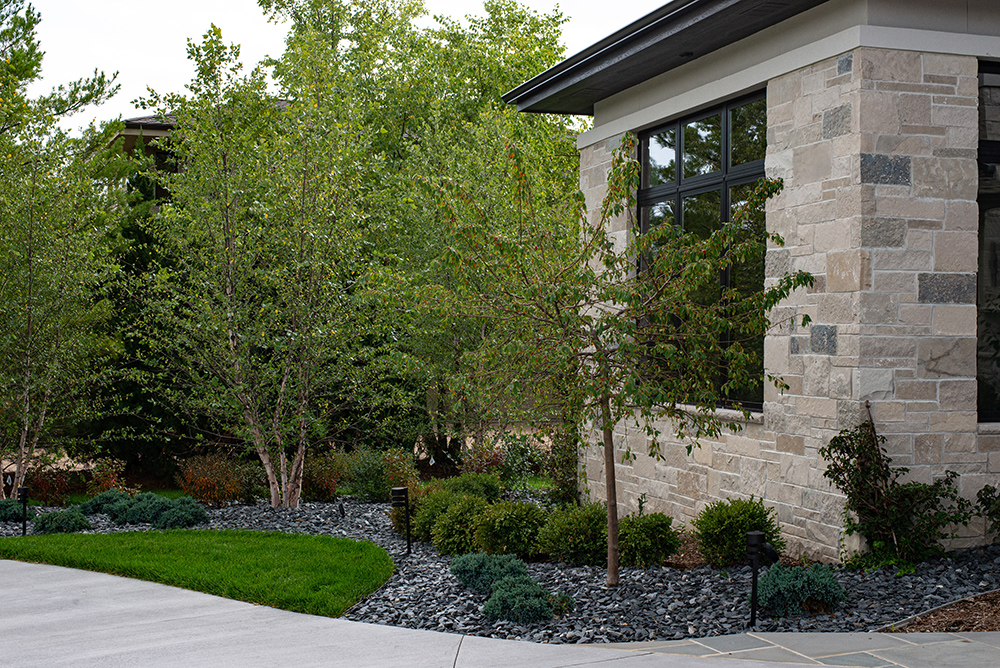On a crisp autumn morning in Milwaukee, imagine sipping a warm beverage while admiring the burst of colors in your garden. It’s almost heavenly.
But not without its challenges.
As leaves gracefully descend, managing green debris becomes paramount in nurturing a healthy, sustainable outdoor haven.
In this guide, crafted with the unique characteristics of the greater Milwaukee area in mind, discover essential tips that enhance your garden’s beauty and contribute to the overall well-being of our environment.
Understanding Garden Waste
In Milwaukee’s gardens, you’ll find all sorts of green leftovers—spent flowers, trimmed branches, and those fallen leaves that make autumn so picturesque.
It’s the usual stuff you’d see after a weekend of tending to your garden:
- Grass clippings
- Weeds
- Pruned shrubs
- Debris from annual plant clean-up
- Dead plants
- Twigs and small sticks
- Plant residues after harvest
But here’s the thing: there’s more to this debris than meets the eye.
It’s not just about keeping things neat; it’s about being kind to our environment. When we talk about getting rid of these garden leftovers, it’s more than a cleanup job. It’s about doing our bit for the local ecosystem.
Local Green Debris Challenges
Our Milwaukee gardens face unique challenges when dealing with this green debris. We have some specific hurdles to tackle.
Weather Woes
Milwaukee’s weather keeps us on our toes, and our gardens feel it, too.
Seriously… Wait 10 minutes and you’re sure to feel the difference between the crisp fall morning and the almost summer-like warm afternoon!
The ever-changing climate brings its own set of challenges for managing green debris.
From sudden storms scattering leaves to unexpected frosts affecting plant health, we must be a step ahead in navigating these weather-related hurdles.
Local Regulations on Deck
Our city has some rules in place, and rightly so. Understanding local regulations is key to responsibly handling garden waste.
From disposal guidelines to designated collection days, staying in the know helps us keep our gardens and neighborhoods in tip-top shape while respecting the community’s standards.
Neighborhood Expectations
Milwaukeeans take pride in their neighborhoods. There’s an unspoken agreement to keep our streets and gardens looking good.
Meeting neighborhood expectations regarding garden waste disposal is not just a civic duty; it’s a shared effort to maintain the charm of our local green spaces.
4 Tips for Garden Waste in the Greater Milwaukee Area
Sure, yard waste can be a bit of a hassle. However, properly disposing of or utilizing green debris can be simple and rewarding with the right preparation and planning.
With the right approach, you can maximize your green waste while keeping your neighborhood and community looking its best.
1. Yard Waste Pickup Programs
As the seasons shift, many local municipalities offer curbside pickups for yard waste as part of your regular garbage service.
It’s essential to stay in the know and check your local city or county website for information on properly preparing for your curbside pickup.
For instance, some programs may require you to bag your green waste, or else they will not pick it up.
However, other regions in the Milwaukee area may require that you pile your green waste in a specific way for pickup. For instance, in the city of Milwaukee, garden waste pickup runs between October 1st and November 15th.
Residents are encouraged to keep their piles away from sewer grates and are to be located roughly one foot from the curb to allow for proper water flow to the sewers.
2. Composting in Milwaukee
Composting is the practice of returning organic matter to the soil through the process of decomposition. `Once the organic matter is broken down, it can be used as fertilizer in your garden or yard in the springtime.
Benefits of Composting:
- Nutrient-rich soil: Compost is a nutrient powerhouse, enriching your soil with essential elements for plant growth.
- Water Retention: Milwaukee’s weather can be unpredictable, but compost helps your soil retain moisture, keeping your garden hydrated.
- Reduced Landfill Waste: By composting, you’re diverting kitchen scraps and garden waste from landfills, contributing to a greener Wisconsin.
While home composting is a great practice, many local municipalities have specific guidelines for residents who wish to dispose of their green waste through composting.
According to the City of Milwaukee, all compost piles must have a hood and be made of commercial-grade materials.
Tips for Composting Success in Milwaukee:
- Balance is Key: Aim for a mix of green (nitrogen-rich) and brown (carbon-rich) materials. Lawn clippings, kitchen scraps, and dry leaves are a winning combo.
- Mind the Moisture: Milwaukee’s climate can vary, so monitor your compost’s moisture. It should feel like a wrung-out sponge—damp but not waterlogged.
- Patience Pays Off: Composting is a slow dance. Give it time, turn your pile regularly, and you’ll soon have nutrient-rich compost ready to boost your Milwaukee garden’s vitality.
3. Mulching Techniques
When most homeowners think of mulch, they think of the traditional chunks of woodchips or plastic faux chips that line their flowerbeds. While these mulches are effective, they are not the only options available.
In fact, mulching with organic matter, such as shredded leaves, grass clippings, or even bark, can make a big difference in the health of your soil and the quality of your garden. This technique not only adds to the aesthetic allure of your green haven but serves as an eco-friendly solution for managing green debris by:
- Acting as a Natural Weed Barrier: Tired of battling stubborn weeds? Mulch acts as a protective shield, stifling weed growth and minimizing the need for constant maintenance.
- Boosting Soil Health: Milwaukee’s diverse weather can be challenging, but mulch insulates your soil. It regulates temperature, conserves moisture, and provides a cozy home for beneficial organisms.
Mulching Tips for Garden Waste:
Layering Organic Mulch: Begin with a layer of organic mulch crafted from yard waste like shredded leaves or bark. This not only adds aesthetic appeal but also decomposes over time, enriching your soil with organic goodness.
- Mindful Application: Apply mulch when the soil is moist in spring or fall. In Milwaukee, this timing ensures your garden gets the most out of the mulching benefits during varied weather conditions.
- Choose Wisely: Opt for locally sourced mulch to ensure it’s well-suited for Milwaukee’s climate. Hardwood mulch, for example, not only looks great but also withstands our city’s seasonal fluctuations.
4. Professional Garden Waste Removal Services
Professional garden waste removal services offer more than just a clean garden. They provide a convenient, eco-friendly solution that allows you to relish the beauty of your Milwaukee garden without getting your hands dirty.
For example, American Landscape offers several services to help you manage garden waste, including:
Basic Lawncare, Mowing and Debris Removal
These services maintain your lawn’s vibrancy by ensuring optimal grass height, promoting healthy growth, and safeguarding against potential issues.
Regular mowing and efficient debris removal contribute to a neat and enjoyable outdoor space for relaxation and connection with nature.
Fall and Spring Cleanups
These services revitalize your garden by clearing away seasonal debris, trimming overgrown plants, and preparing your outdoor space for the upcoming season.
This thorough cleanup enhances the visual appeal of your garden and fosters a healthier environment for plants to thrive. With fall and spring cleanups, your garden welcomes each season with a fresh start, ensuring it remains vibrant and resilient throughout the year.
When deciding which professional services to invest your time and money in, you’ll want to consider some of the following:
- Local Know-How: Opt for a service familiar with Milwaukee’s unique greenery. Local expertise ensures they understand the quirks of our climate and the specific needs of your garden.
- Sustainability Practices: Embrace eco-consciousness by choosing a service that prioritizes sustainability. Look for those who compost or recycle the garden waste they collect, contributing to Milwaukee’s green initiatives.
- Regulation Compliance: Milwaukee has its set of regulations regarding waste disposal. Ensure your chosen service adheres to these regulations, guaranteeing a hassle-free and compliant garden waste removal process.
Get More Tips for Garden Waste From American Landscape
Explore a greener, more sustainable approach to garden waste management with American Landscape. As you’ve discovered essential tips for handling garden waste, we invite you to explore creating an eco-friendly haven in your Milwaukee outdoor space.
Trust American Landscape to be your partner in cultivating a garden that enhances curb appeal and contributes to the well-being of our local environment.
For personalized guidance and comprehensive garden services, reach out to us today.












 Ryan and John both suggest
Ryan and John both suggest 



